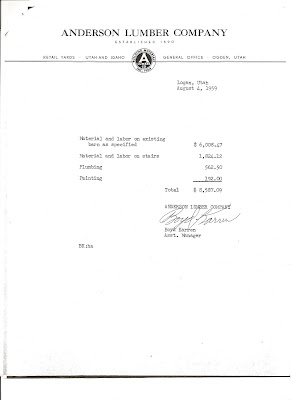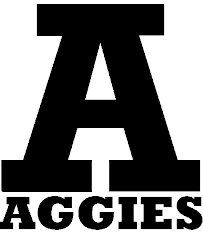

John Seiter is a professor of Speech Communication. USU's barn was the location of his first office on campus, and the wellspring of many wonderful stories of camaraderie for both he and his wife Debora.
John Seiter remembers:
Antonio (a large ceramic pig from San Antonio that John keeps in his office) ended up being in the barn and it's the best conversation piece for a professor, especially a professor whose office is in the barn.... My students joked that there was a ghost in the barn. And of course a lot of things started being attributed to this, it started as a ghost, and it ended up as a pig ghost....for a while they were blaming it on my pig, and then it went from my pig to it's an actual ghost pig. And they had a name for it, it wasn't Antonio. I can't remember what the name was but, you know that banging (the building had steam heat) that happens at odd times when your in class. Sometimes your teaching and the banging would start and the students would go "It's the ghost pig."
I have an amazing office, third floor of Old Main, just a beautiful view of the Wellsvilles. But if someone was to tell me that I could move back to the barn, with air conditioning, and have the same crew that was there originally, I'd move back. I'm thrilled what they are doing with it because for a while I thought they would tear it down and that's so much a part of my memories of Utah State University.
I never noticed this, but...I do remember students telling me when it rained, that the barn, that they could still smell the hay.... I never smelled it but I heard some many students tell me that 'I can smell hay in here.' I'm saying eight to ten students said it that I thought maybe they had extra sensitive noses or something. I don't know if after years, and years, and years, it gets into the walls.
Debora Seiter remembers:
My uncle Mike (Miles Grant Davidson) is still alive and still lives in Magna, Utah and he is my mother's oldest brother. He was in WWII, and after the war he wanted to be an engineer….He took advantage of the GI bill and he went to USU. The irony of the whole thing is that my mother, who was much younger than my Uncle Mike actually came up here with him to inspect the school with him.... And so when my Uncle Mike knew that John had started teaching here, he wanted to come up and look around, and we walked him all over the campus. And, of course, a lot of the buildings were brand new, but he recognized the older ones, Old Main and he just really honed in on the barn. We took him in there because he knew John's office was in there and he could tell us things about well this used to be here and that used to be there, and thoroughly delighted him that it was still there.
Charlie (Huenemann) was the first person to accept an office outside the barn.... I remember feeling like, well gosh, this isn't going to be the same, and honestly it hasn't. People have kind of branched out and made new connections and networking. But the original group, and I am so glad there had been, three or four years that they were able to make a bond that would carry them elsewhere. But as far as recreating as a group and being able to bounce from office to office, still in your chair rolling around, or being able to have a snake, or whatever. Those times were over.









